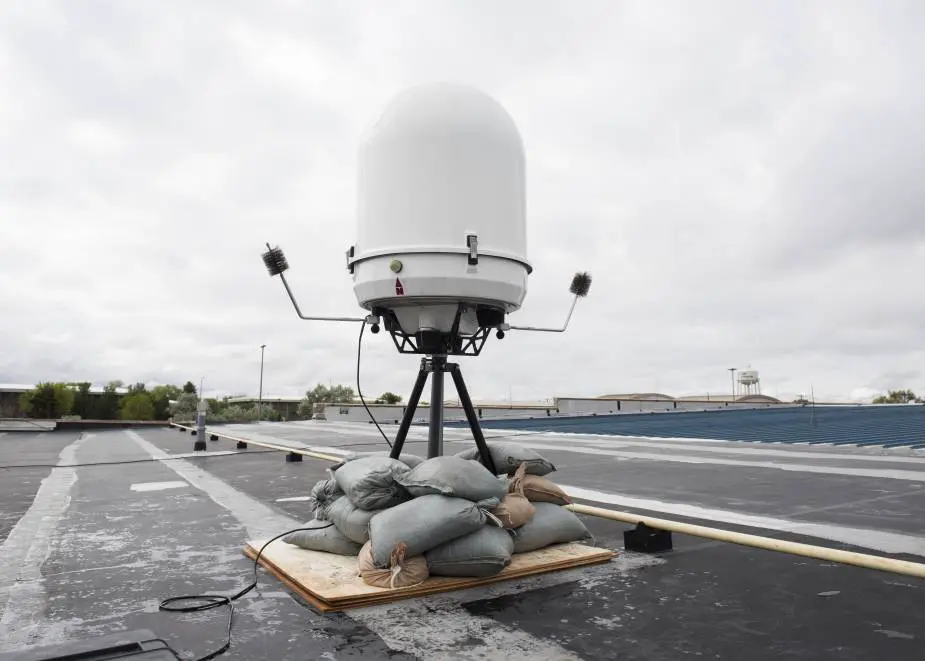Breaking news
Portable Doppler Radar weather system keeps US aircraft soaring.
A team of weather systems maintainers from the U.S. 557th Weather Wing’s 2nd Combat Weather Systems Squadron traveled from Hurlburt Field, Florida, to Andersen Air Force Base, Guam, July 5-15 to install a Portable Doppler Radar weather system.
Follow Air Recognition on Google News at this link

A Portable Doppler Radar provides weather surveillance May 25, 2019, at Mountain Home Air Force Base, Idaho. The is the first time the Doppler system has been installed on a Continental United States base. (Picture source: U.S. Air Force/Senior Airman Tyrell Hall)
The system was requested by the base’s 36th Operational Support Squadron when the island’s only Doppler system, Next Generation Weather Radar, broke in early 2021 : “The portable Doppler radar system installed by the team from 2 CWSS in conjunction with our own radar, airfield, and weather systems Airmen provides organic real-time meteorological observations for Andersen AFB and the surrounding community,” said Lt. Col. Jonathan Vogel, 36th Operations Support Squadron commander. “This agile capability is vital to our daily operations and safety, both in the air and on the ground, especially as we enter typhoon season.”
Andersen AFB, situated in the Western Pacific Ocean, supports U.S. and foreign Air Force operations for the U.S. Indo-Pacific Command. Typhoon season affects the base from June through November, and being able to provide pinpoint weather forecasts is critical to resource protection and flying operations. “In 2020, there were 28 named tropical weather systems observed in the Pacific Ocean. The most recent typhoon storm impacted Andersen AFB in 2019,” said Master Sgt. Andrew Bethea, 2 CWSS Training Flight chief. “An unpredictable and high threat tropical storm season was a driving factor for utilizing this tactical system on the island to solve this intelligence gap.”
Bethea said his two-man team of Tech. Sgt. Curtis Filkins and Staff Sgt. Darren Tran, both radar, airfield and weather systems craftsman from the 2 CWSS, were instrumental in overcoming challenges involved in transporting the system to the island of Guam and integrating it into the base’s telecommunications systems to ensure constant data flow to weather operators across the globe. “Both Airmen deployed to the U.S. Central Command area of responsibility recently, so they are very knowledgeable at installing, maintaining and instructing on this specific system,” Bethea said. “I can’t think of two better [noncommissioned officers] to handle the job at hand.”
The 2 CWSS is currently the sole force provider of training, installation, data dissemination and maintenance for Portable Doppler Radar Systems supporting Air Force operations. The system provides weather intelligence to forecasters by determining precipitation types and intensity. It is typically deployed to forward operating locations, but can also be used at fixed bases such as Andersen.
“As USCENTCOM requirements begin to decline, the communications, radar, airfield and weather systems, and weather Airmen of the 2 CWSS, stand combat ready to converge on environmental data collection problem sets for the joint warfighter anywhere on the globe,” said Maj. Gary Charney, 2 CWSS commander.
The island’s permanent NEXRAD system is expected to be repaired later this summer.


























